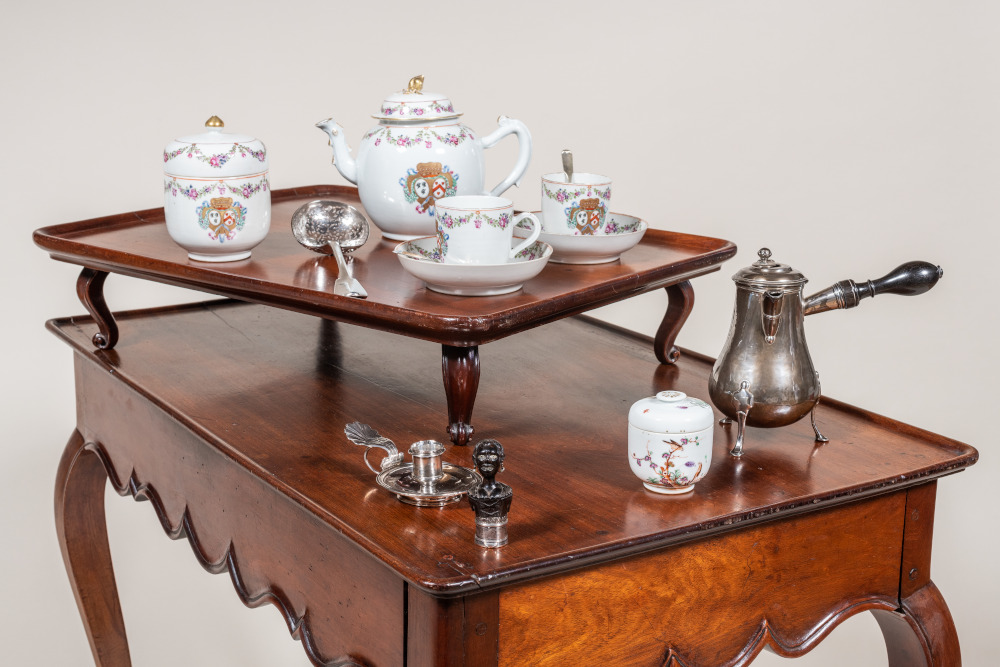In France, the year 1657 saw the departure of the first Atlantic trade ship. It was also the year that the court of Louis XIV welcomed its first cooks from Italy, who knew how to prepare chocolate, on which the king’s mother, Anne of Austria, (1601-1666), was extremely keen.
Sugar refineries and coffee roasters began to appear in France itself, just as eau-de-vie distilleries known as guildiveries and rum distilleries were increasing in the colonies. The wealthiest classes loved anything that came from the territories and to satisfy their demands artisans competed with each other to be the most creative, thanks to new techniques. Coffeemakers, teapots, hot chocolate pots, sugar bowls, sugar tongs, sprinklers, punch bowls, “cabaret” tables and snuffboxes made their entrance into bourgeois interiors.
The circulation of goods from the colonies was established as the central element to market globalisation across not three, but four continents: Europe, Africa, America and Asia. Spices, silks, Indian hand-painted cotton, porcelain and lacquer from China were being traded around the world. The routes taken by this merchandise were often much more complex than it would seem. Thus, some of the Indian textiles which came to Europe were in fact destined for the African coast, simply en route as part of the Atlantic slave trade.
As far as the goods issued from slave plantations were concerned, in the XVIII century, these were inarguably the most tragic example of an intensive and widespread production system established in one part of the world for the benefit of another.
Translation: Tilly O'Neill


